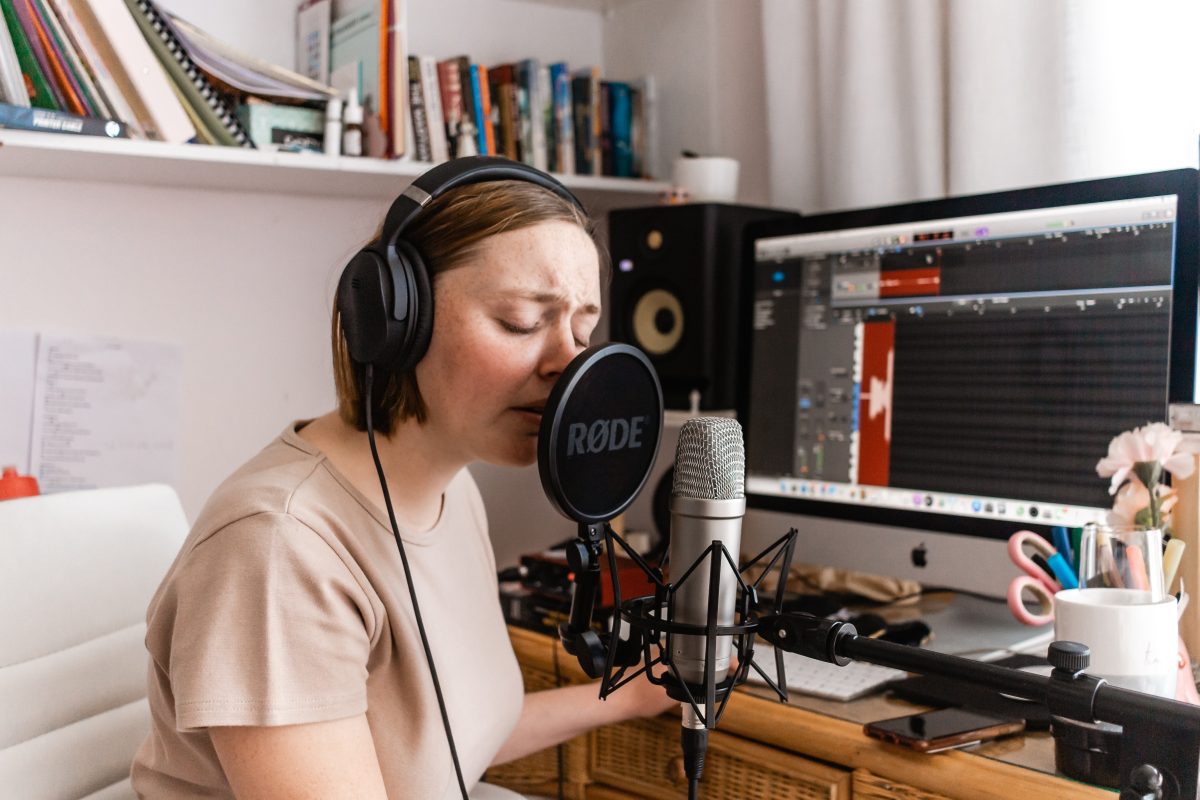Have you ever wondered how musicians achieve real-time performance with minimal delays in their recordings? Today, we’re going to explore a game-changing technology that has revolutionized the way musicians and producers work in the studio: zero latency monitoring. If you’re passionate about creating music or curious about the inner workings of the recording process, you’re in for a treat. In this article, we’ll demystify the concept of zero-latency monitoring, explain its significance, and reveal how it has become an indispensable tool for professionals and enthusiasts alike.
What is zero latency monitoring? Zero latency monitoring is a technique that allows musicians to monitor their audio in real time without experiencing any noticeable delays. By utilizing dedicated hardware, optimizing buffer settings, and employing efficient monitoring techniques, musicians can achieve a seamless and responsive recording and playback experience.
What factors influencing latency in music production?
Latency in music production can be influenced by various factors, and understanding them is crucial for minimizing delays and ensuring optimal performance. Let’s delve into some of the significant factors that contribute to latency:

1. Computer processing and audio routing
When it comes to latency in computer-based music production, one of the primary factors is the processing power of your computer. Host-based recording systems, which rely on the computer’s CPU for audio processing, can introduce more latency compared to systems that utilize dedicated audio processing hardware. Additionally, the efficiency of audio drivers and buffer settings can impact latency, with lower buffer sizes generally resulting in lower latency.
Some plugins, especially those with intensive processing requirements, can introduce latency due to the time it takes for the computer to process the audio.
2. Software and plugins
The choice of software and plugins in your music production setup can significantly impact latency. Some plugins, especially those with intensive processing requirements, can introduce latency due to the time it takes for the computer to process the audio. However, many modern plugins and software solutions are designed with optimizations to minimize latency and provide real-time performance.
3. Audio interface and hardware
The audio interface and other hardware components in your setup also play a role in latency. High-quality audio interfaces with low-latency drivers are designed to reduce signal processing delays, ensuring minimal latency during recording and playback. Additionally, utilizing ASIO (Audio Stream Input/Output) drivers for Windows or Core Audio for Mac can help further minimize latency.
AKAI Professional MPK Mini MK3

AKAI Professional MPK Mini MK3
What are some techniques to minimize latency in music production?
When it comes to minimizing latency in music production, there are several techniques and strategies you can employ to ensure a smooth and responsive workflow. Let’s explore some of the most effective techniques:
1. Dedicated audio processing hardware
Utilizing dedicated audio processing hardware can significantly reduce latency in your setup. DSP (Digital Signal Processing) cards, such as those found in TDM-based systems offload the audio processing tasks from the computer’s CPU, allowing for more efficient and faster processing. This approach ensures near-instantaneous feedback and real-time performance.
2. Optimal buffer settings
Adjusting the buffer settings in your digital audio workstation (DAW) is a crucial step in minimizing latency. Lower buffer sizes result in reduced latency but can put more strain on your computer’s processing power. Finding the right balance between low latency and system stability is essential. Experiment with different buffer sizes to determine the optimal setting for your specific setup and workflow.
3. Efficient workflow and track freezing
Streamlining your workflow and minimizing the number of plugins and software instruments in use can help reduce latency. Consider freezing tracks that are not actively being worked on. Track freezing temporarily renders the track as an audio file, reducing the real-time processing required and lowering latency.
Dos and don’ts for minimizing latency in music production
The dos and don’ts for achieving optimal performance in terms of latency in audio processing:
| Do | Don’t |
|---|---|
| Utilize dedicated audio processing hardware, such as DSP cards. | Rely solely on host-based recording systems for low-latency performance. |
| Optimize buffer settings for a balance between low latency and system stability. | Use excessively low buffer sizes that strain your computer’s processing power. |
| Streamline your workflow and minimize the number of active plugins and software instruments. | Overload your project with unnecessary plugins, which can increase latency. |
| Consider freezing tracks that are not currently being worked on. | Neglect to update your audio drivers and software, potentially missing out on latency improvements. |

What to consider regarding latency in your music production setup?
As musicians, it’s important to be aware of the practical considerations related to latency in your music production setup. Let’s explore some key points to keep in mind:
Latency tolerance
Every musician has their own tolerance level for latency. While low latency is desirable, it’s essential to find a balance that works for you. Consider factors such as your musical style, the instruments you play, and your personal playing technique. Experiment and find the latency threshold that allows you to perform comfortably and maintain your artistic expression.
Monitoring techniques
To mitigate the impact of latency, it’s crucial to employ effective monitoring techniques during recording and playback. Here are a few tips to help you navigate latency-related challenges:
- Direct monitoring: Utilize direct monitoring through your audio interface to bypass latency-inducing processing and monitor the audio directly from the input source.
- Headphone cue mixes: Consider using headphone cue mixes to create a customized monitoring setup that provides real-time audio without latency.
- Hardware monitoring: Use hardware monitoring options available on your audio interface to achieve low-latency monitoring during recording.
Workflow optimization
Optimizing your workflow can go a long way in minimizing latency-related frustrations. Here are some practical steps to enhance your efficiency:
- Organize your sessions by grouping tracks with similar processing requirements. This allows you to apply effects and plugins more efficiently, reducing overall latency.
- Print or bounce tracks with heavy processing to audio files to free up processing power and minimize real-time latency during playback.
- Keep your software and plugins updated to benefit from performance optimizations and bug fixes that can address latency-related issues.
Latency tolerance among musicians
The varying levels of latency tolerance among musicians, providing insights into the range of acceptable latency for different musical styles and instruments.
| Musical Style | Average Latency Tolerance (in milliseconds) |
|---|---|
| Classical | 5-20 |
| Jazz | 10-30 |
| Rock | 20-50 |
| Electronic | 30-70 |
| Hip Hop | 40-80 |
Advantages and disadvantages of zero latency in music production?
Understanding the advantages and disadvantages of zero latency monitoring allows musicians to weigh the benefits against the potential challenges and make informed decisions based on their specific needs and resources.
Advantages
- Reduced audio artifacts: Lower latency minimizes the occurrence of audio artifacts, ensuring clean and pristine recordings and playback.
- Real-time collaboration: Low latency enables real-time collaboration among musicians, allowing for seamless interactions and creative exchanges.
- Enhanced musical performance: Near-instantaneous feedback enables musicians to perform with accuracy, maintaining the natural flow and timing of their playing.
Disadvantages
- Hardware requirements: Achieving ultra-low latency often requires dedicated audio processing hardware, which can involve additional costs.
- Processing limitations: Extremely low latency settings can strain a computer’s processing power, limiting the number of plugins and effects that can be used simultaneously.
- Compatibility issues: Some audio interfaces and software solutions may not be fully compatible with low-latency setups, limiting flexibility in choice and configuration.
If you want even more great tips and information, check out the video below.
Frequently Asked Questions (FAQ)
Can latency affect the quality of my recordings?
Latency can impact the quality of your recordings, particularly when it comes to real-time performance. Higher latency can introduce delays between when you play an instrument or sing and when you hear the sound, potentially affecting your timing and overall performance. Minimizing latency ensures accurate and natural recordings with reduced audio artifacts.
Do I need dedicated audio processing hardware to reduce latency?
While dedicated audio processing hardware, such as DSP cards, can significantly reduce latency, it is not always a requirement. Many modern software solutions and audio interfaces offer optimizations that help minimize latency.
By optimizing buffer settings, using efficient software, and keeping your system updated, you can achieve low latency without necessarily relying on dedicated hardware.
Is it possible to eliminate latency completely?
Achieving zero latency in music production is practically impossible due to the inherent time required for signal conversion and processing. However, it is possible to achieve extremely low latency that is imperceptible to human ears.
Through proper setup, efficient hardware and software choices, and optimized workflows, you can reduce latency to a level that is indistinguishable for real-time performance and recording purposes.
Conclusion
Well, there you have it—a deep dive into the realm of latency in music production. We’ve uncovered how latency can affect musicians, explored techniques to minimize it, and discussed practical considerations. From reducing unwanted delays to enhancing your musical performance, understanding and managing latency is key.
Let me know your questions in the comments section below (I read and reply to every comment). If you found this article helpful, share it with a friend, and check out my full blog for more tips and tricks on music production. Thanks for reading, and keep the beats flowing!
Key Takeaways
This article covered the topic of latency in music production. Here are some key takeaways:
- Latency refers to the delay in a signal’s path and can impact real-time music programs and instruments.
- Factors such as computer processing, software, and hardware influence latency in music production setups.
- Techniques to minimize latency include using dedicated audio processing hardware, optimizing buffer settings, and streamlining workflows.
- Musicians should consider their individual latency tolerance, employ effective monitoring techniques, and optimize their workflow to mitigate latency-related challenges.















